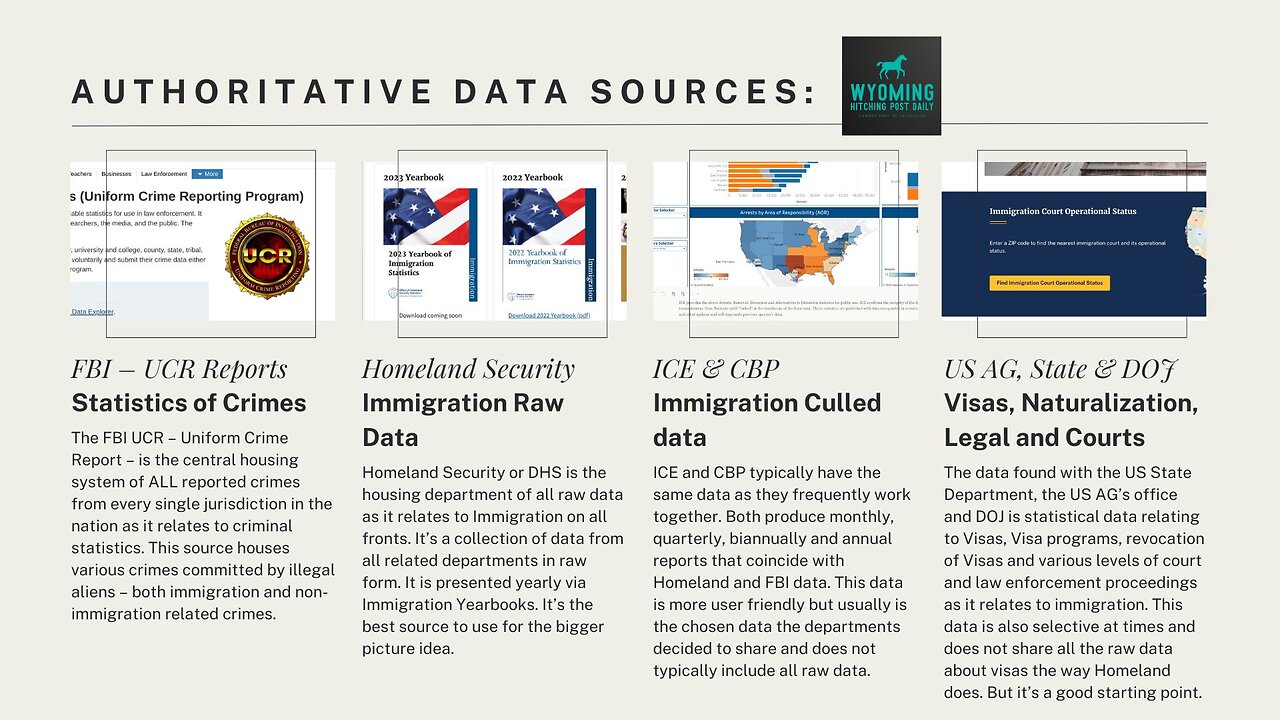Premium Only Content

Immigration Part Two: By the Numbers using Stats
Summary
This conversation delves into the evolution of U.S. immigration policies, highlighting key reforms from the 1790 Naturalization Act to recent developments under various administrations. It emphasizes the importance of data in understanding immigration trends, demographics, and associated criminal activities. The discussion also critiques the effectiveness of current enforcement actions and the implications of immigration policies on national security and societal impacts.
Takeaways
The 1790 Naturalization Act was the first immigration reform in the U.S.
Subsequent immigration acts built upon the foundation set by the 1790 Act.
The 1924 Immigration Act established quotas based on national origins.
The 1965 Immigration Act abolished racial quotas and prioritized skilled immigrants.
Recent immigration policies have seen a shift towards stricter enforcement.
Data from the FBI and CBP reveals significant trends in illegal immigration.
A large percentage of illegal immigrants are involved in criminal activities.
Tribal lands play a crucial role in the dynamics of illegal immigration.
The Biden administration's policies have led to record highs in illegal entries.
Understanding immigration data is essential for informed discussions on policy.
-
 LIVE
LIVE
The Bubba Army
21 hours agoDIDDY'S NEW DOC EXPOSED! - Bubba the Love Sponge® Show | 12/02/25
2,747 watching -
 40:10
40:10
ZeeeMedia
12 hours agoFDA Memo: "Covid-19 Vaccines Have Killed American Children" | Daily Pulse Ep 153
5.67K26 -
 LIVE
LIVE
Pickleball Now
4 hours agoLive: IPBL 2025 Day 2 | High-Intensity Matchups Continue in the Indian Pickleball League
263 watching -
 15:11
15:11
itsSeanDaniel
1 day agoAngry Liberal Defends ILLEGALS, Then Gets CALLED OUT For It
40.1K24 -
 10:32
10:32
Actual Justice Warrior
2 days agoColorado School FORCES Girl Into Bed With Trans
16.4K25 -
 18:14
18:14
Nikko Ortiz
14 hours agoMost Painful Internet Clips...
69.5K12 -
 2:08:21
2:08:21
Side Scrollers Podcast
20 hours agoHasan Dog Joke Gets Streamer BANNED + Great Reset 100% CONFIRMED + More | Side Scrollers
53.7K14 -
 11:35
11:35
MetatronGaming
3 days agoYou Won't Believe Your Own Eyes..
17.8K1 -
 20:22
20:22
The Pascal Show
10 hours ago $1.26 earnedARE THEY IGNORING HER?! Is The White House & FBI Ignoring Candace Owens' A**assination Claims?!
12.4K6 -
 1:24:49
1:24:49
omarelattar
2 days agoThe $100M Sales Expert: “The Psychology of Selling To Anyone!” (High Ticket, Phone & Ai Secrets)
41.5K3